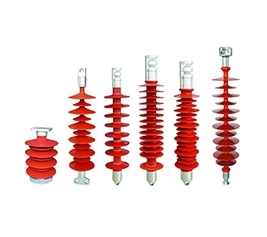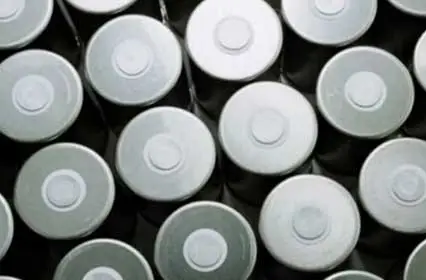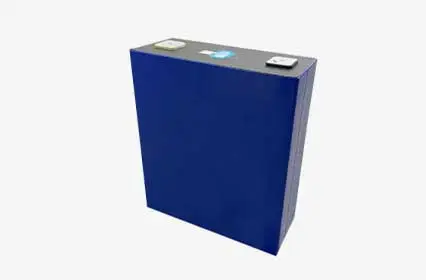en
+
In the design of protective means, engineers and technicians need to consider all aspects and Organically combine lightning-termination devices and lightning arresters to complement each other. The lightning protection design of substations or use of lightning arrester in substation is a common topic, and I don't think it is out of date to talk about it anytime. The reason why it is not outdated is that although the lightning protection design has been done all the time, and various related specifications are also emphasized, but in the actual operation of the substation, due to insufficient design or irregular construction (this article ends, not in-depth discussion) various lightning damage accidents occur from time to time, seriously affecting the safe and stable operation of power equipment and power grids, and also sounded the alarm to our engineering designers. How should this be designed? Only under the condition of not increasing equipment investment can we protect power equipment to the greatest extent and ensure the safety of power grid operation. This is an urgent problem that needs to be solved in front of our engineering designers.
In the atmosphere, positively charged ice crystals and negatively charged water particles, due to their different densities, form an airflow that separates positively charged ice crystals from negatively charged water particles to form a part of Positively and partially negatively charged thunderclouds. Due to the continuous accumulation of opposite charges, the electric field strength between clouds of different polarities continues to increase. When the electric field strength somewhere exceeds the possible breakdown strength of the air, an inter-cloud discharge is formed. This kind of cloud-to-cloud discharge is called sheet lightning, which accounts for about 95% of lightning phenomena. Generally, it does not pose a threat to buildings on the ground. There is also a situation, usually, the negatively charged thunderclouds are in the lower part of the atmosphere, and the positively charged thunderclouds are in the upper part. Due to the electrostatic induction of negative electricity in thunderclouds, the nearby ground accumulates positive charges, thus forming a strong electric field between the ground and thunderclouds.
Like inter-cloud discharge, when the charge density accumulated in a certain place reaches a certain level, and the electric field strength here reaches the critical value of free air, conditions are created for the development of lightning strikes. The discharge between the cloud and the ground is called linear lightning, which accounts for about 5% of lightning phenomena, and it poses a strong threat to buildings on the ground. The reason why lightning is very destructive is mainly that it releases the energy stored in the thundercloud in just tens of microseconds, and the instantaneous power is extremely huge.
There are two main ways of lightning damage to electrical equipment, one is direct lightning strikes, and the other is induced lightning strikes. Lightning strikes directly on buildings or electrical equipment, which will cause damage to buildings, and electrical equipment will catch fire, burn, or even explode. Inductive lighting can be divided into electrostatic induction and electromagnetic induction according to the mechanism of lightning action. The main principle of electrostatic induction, that is, capacitive coupling, is that before the thundercloud discharges, the bound charges induced by lightning on the surface of the metal conductor will not move by themselves. After the discharge between the cloud and the ground or between the clouds, the charge carried by the charged thundercloud is quickly neutralized, and the induced charge on the metal wire cannot disappear immediately due to the relatively large resistance between the metal wire and the ground, and the bound charge will go to the ground. The two sides move to form an overvoltage wave (that is, a lightning wave), whose value can reach thousands of volts or even tens of thousands of volts.
Like inter-cloud discharge, when the charge density accumulated in a certain place reaches a certain level, and the electric field strength here reaches the critical value of free air, conditions are created for the development of lightning strikes. The discharge between the cloud and the ground is called linear lightning, which accounts for about 5% of the lightning phenomenon, and it poses a strong threat to buildings on the ground. The reason why lightning is very destructive is mainly that it releases the energy stored in the thundercloud in just tens of microseconds, and the instantaneous power is extremely huge.
There are two main ways of lightning damage to electrical equipment, one is direct lightning strikes, and the other is induced lightning strikes. Lightning strikes directly on buildings or electrical equipment, which will cause damage to buildings, and electrical equipment will catch fire, burn, or even explode. Inductive lighting can be divided into electrostatic induction and electromagnetic induction according to the mechanism of lightning action. The main principle of electrostatic induction, that is, capacitive coupling, is that before the thundercloud discharges, the bound charges induced by lightning on the surface of the metal conductor will not move by themselves. After the discharge between the cloud and the ground or between the clouds, the charge carried by the charged thundercloud is quickly neutralized, and the induced charge on the metal wire cannot disappear immediately Due to the relatively large resistance between the metal wire and the ground, and the bound charge will go to the ground. The two sides move to form an overvoltage wave (that is, a lightning wave), whose value can reach thousands of volts or even tens of thousands of volts.
Measures to prevent lightning wave invasion In addition to installing lightning arresters on the busbar of the substation, incoming line section protection is implemented on the incoming line section of the substation. The protection of the incoming line section is an important auxiliary measure for the protection of the lightning intrusion wave. The function of the incoming line section protection is to limit the amplitude of the lightning current flowing through the arrester and the steepness of the intrusive wave. Due to the protection measures for the incoming line section, there is very little chance of lightning strikes in the incoming line section. The amplitude and steepness of lightning falling outside the incoming line section will be limited in the process of invading the substation. To prevent counterattack in the future, the grounding resistance of the tower on the incoming line protection section should be as low as possible.
The incoming and outgoing high-voltage transmission lines of 110kV and above in the substation generally use full-line lightning protection lines to prevent the lightning from entering the substation after the wire is directly struck by lightning. For 35kV lines, generally, only lightning protection wires are installed within 1-2 kilometers of the incoming or outgoing lines of the substation. The lightning resistance level value and protection angle (less than 20 degrees, maximum not exceeding 30 degrees) of the incoming line section are used to reduce the probability of counterattack and shield attack respectively.
Lightning arrester installation in substation is a critical component of the electrical system to protect equipment from lightning-induced surges. Surge arresters play a vital role in safeguarding transformer substations from sudden voltage spikes caused by lightning strikes. These arresters divert excessive electrical energy to the ground, preventing damage to sensitive substation equipment. Substation insulators also play a crucial role by isolating electrical conductors, preventing unwanted current leaks, and ensuring the efficient flow of electricity. Learn more about the importance of lightning surge arresters and insulators in transformer substations at YF POWER.
Discover the vital function of surge arresters in a substation and explore the types of lightning arresters commonly used in electrical substations. Lightning arresters offer critical protection against lightning-induced surges, safeguarding substation equipment. Different types of lightning arresters are used in substations, including gap-type arresters, metal-oxide arresters, and expulsion-type arresters. Each type serves the function of diverting excessive electrical energy to the ground and preventing damage to sensitive substation equipment. The choice of lightning arrester depends on the specific needs and voltage requirements of the substation. To learn more about the function and types of lightning arresters used in substations, visit YF POWER's website. Ensure the robust protection of your substation equipment.




